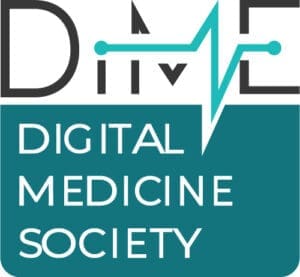Table of Contents
- What is Generalized Anxiety Disorder
- Chronic Tension, Anxiety and your Health
- How Anxiety Can Cause Physical Symptoms
- Long Term Consequences of Anxiety
- Is My Anxiety Normal?
Anxiety & Panic Disorder Treatment: Feel Better Today
Evidence-Based Treatment for Generalized Anxiety, Panic Disorder, and Panic Attacks
You don’t have to live with overwhelming anxiety or fear of the next panic attack. Whether you’re experiencing constant worry, unexpected panic attacks, or both, there are proven treatments that can help you regain control of your life.
Research shows that 70-90% of people struggling with anxiety and panic disorders improve significantly with evidence-based therapy. With the right treatment approach, you can learn to manage your symptoms, reduce your fear, and live more confidently.
I specialize in treating both generalized anxiety disorder and panic disorder using cognitive behavioral therapy (CBT) and other evidence-based approaches tailored to your specific needs.
Generalized Anxiety Disorder
Anxiety is an emotion that is characterized by feelings of tension and worried thoughts. A person with a generalized anxiety disorder (GAD) usually will display excessive anxiety or worry most days and has done so for at least 6 months.
They will worry about many things, such as:
personal health

work
social interactions
and everyday routine life events and circumstances.
This fear and anxiety can cause significant problems in many areas of their life, such as work, school, and even social interactions.
Generalized Anxiety Disorder Symptoms Include:
- Feeling restless and on edge
- Easily fatigued
- Difficulty concentrating; mind going blank
- Being irritable
- Experiencing muscle tension
- Difficulty controlling feelings of worry
- Sleep problems, difficulty falling or staying asleep, restlessness, or unsatisfying sleep
How Does Chronic Anxiety Affect Physical Health?
Chronic tension and anxiety can have detrimental effects on physical health, leading to symptoms such as:
- Stomach pain and indigestion
- Chest pain or tightness
- Numbness or tingling
- Vision changes
- Sweaty palms
- Headaches and migraines
- Digestive issues
Carrying tension and anxiety in our bodies for long periods can create a cycle of physical symptoms that perpetuate the anxiety itself.
Types of Anxiety Disorders We Treat
While Generalized Anxiety Disorder is one of the most common forms of anxiety, it’s important to recognize that anxiety can manifest in different ways. In my practice, I work with clients experiencing various types of anxiety disorders, including:
Generalized Anxiety Disorder (GAD): Persistent worry about everyday issues, even when there’s little or no reason for concern. This worry is difficult to control and affects daily functioning.

Panic Disorder: Recurrent, unexpected panic attacks—sudden periods of intense fear or discomfort that can include chest pain, heart palpitations, shortness of breath, dizziness, or a feeling of impending doom. These episodes can be so frightening that many people worry about having another attack, which can create a cycle of anxiety.
Social Anxiety Disorder: Intense fear or anxiety in social situations where you might be observed, judged, or evaluated by others. This goes beyond ordinary shyness and can significantly impact work, school, and personal relationships.
Specific Phobias: An overwhelming and unreasonable fear of specific objects or situations that pose little actual danger, such as heights, flying, enclosed spaces, or certain animals.
If you’re unsure which type of anxiety you’re experiencing, that’s completely normal. During our initial evaluation, we’ll work together to understand your specific symptoms and experiences.
Panic Disorder & Panic Attack Treatment
Panic disorder is characterized by recurring, unexpected panic attacks followed by persistent fear about having more attacks or worry about their consequences. Unlike generalized anxiety, panic attacks come on suddenly with intense physical symptoms that can feel life-threatening.
The good news: panic disorder is highly treatable. Research shows that up to 90% of patients achieve remission with evidence-based treatment, and improvements can occur relatively quickly, sometimes in as little as 8-12 weeks, with cognitive-behavioral therapy.
What Are Panic Attacks? Recognizing the Symptoms
A panic attack is a sudden surge of intense fear or discomfort that peaks within minutes. According to the DSM-5, panic attacks include four or more of the following symptoms:
- Palpitations, pounding heart, or accelerated heart rate
- Sweating
- Trembling or shaking
- Sensations of shortness of breath or smothering
- Feelings of choking
- Chest pain or discomfort
- Nausea or abdominal distress
- Dizziness, light-headedness, or faintness
- Chills or heat sensations
- Numbness or tingling (paresthesias)
- Feelings of unreality (derealization) or detachment from oneself (depersonalization)
- Fear of losing control or “going crazy”
- Fear of dying
Many people experiencing their first panic attack believe they’re having a heart attack and go to the emergency room. The physical symptoms are real and intense, but they are not dangerous or life-threatening.
Understanding Panic Disorder
Having one panic attack doesn’t mean you have panic disorder. Panic disorder is diagnosed when you experience:
- Recurrent unexpected panic attacks
- At least one month of persistent concern or worry about having more attacks
- Worry about the consequences of panic attacks (e.g., “Am I having a heart attack?” “Am I going crazy?”)
- Significant behavioral changes related to the attacks, such as avoiding certain places or situations
Panic Disorder and Agoraphobia
Panic disorder often co-occurs with agoraphobia—a fear of situations or places that are hard to escape or where getting help might be difficult. This can include:
- Crowded places like shopping malls or theaters
- Public transportation (buses, trains, planes)
- Elevators or enclosed spaces
- Being outside the home alone
- Standing in lines or being in crowds
When panic disorder and agoraphobia develop together, people may significantly restrict their activities, sometimes becoming homebound.
Why Do Panic Attacks Happen?
Panic attacks can be triggered by various factors:
Biological factors: Some people have an oversensitivity to feelings of suffocation and overreact to carbon dioxide buildup in the blood. This triggers rapid breathing, which ironically can lead to more feelings of breathlessness and create a cycle of panic.
Psychological factors: Anxiety sensitivity—the fear of anxiety symptoms themselves—plays a significant role. When you interpret normal bodily sensations (like a racing heart) as catastrophic or dangerous, it can trigger a full panic attack.
Learned responses: After experiencing panic attacks, your brain can become conditioned to fear certain situations, sensations, or even thoughts, creating anticipatory anxiety that increases the likelihood of future attacks.
“Even when there’s absolutely nothing wrong, I sometimes get this overwhelming sense of doom, like danger is lurking just around the corner.”
Generalized Anxiety vs. Panic Disorder: What's the Difference?
While both are anxiety disorders, they manifest differently:
Generalized Anxiety Disorder (GAD) |
Chronic, persistent worry about many things |
Anxiety is relatively constant throughout the day |
Physical tension and fatigue |
Worry about realistic concerns (health, money, work) |
Difficulty relaxing or “turning off” worry |
Panic Disorder |
Sudden, intense episodes of fear (panic attacks) |
Panic attacks peak within minutes, then subside |
Intense physical symptoms during attacks (racing heart, difficulty breathing) |
Fear of the panic attacks themselves and their consequences |
Avoidance of places where panic attacks have occurred |
Important note: Many people experience both GAD and panic disorder simultaneously. The good news is that evidence-based treatments like CBT can effectively address both conditions, often at the same time.
Anxiety in Women: Understanding Your Unique Experience

Women experience anxiety disorders at more than twice the rate of men, yet their experiences are often misunderstood or overlooked. If you’re a woman struggling with anxiety, it’s important to know that certain factors may be uniquely contributing to your symptoms.
Hormonal Influences
Hormonal fluctuations throughout your life can significantly impact anxiety levels. These changes occur during:
- The menstrual cycle
- Pregnancy and the postpartum period
- Perimenopause and menopause
These hormonal shifts affect brain chemistry and can trigger or intensify anxious feelings. Understanding this connection can help you make sense of patterns in your symptoms and develop more effective coping strategies.
Societal and Cultural Pressures
Many women face unique societal expectations that can contribute to anxiety:
Caregiving Expectations: Women are often expected to be primary caregivers for both children and aging parents, leaving little time for self-care and creating overwhelming stress.
The Pressure to Partner and Parent: Whether you’ve chosen to have children or not, to marry or not, you may feel judged for your choices. This can create significant anxiety about managing others’ expectations.

The “Do It All” Mentality: Many women feel pressure to excel in their careers, maintain perfect homes, nurture relationships, and take care of everyone else’s needs—all while appearing to have it together. This perfectionism and the need to stay ahead of every possibility can actually worsen anxiety.
The Struggle to Prioritize Yourself: Women are often conditioned to put others’ needs first. Taking time for your own well-being can feel selfish, even though it’s essential.
These pressures create a cycle where anxiety leads to over-preparation and overthinking, which in turn increases anxiety. Recognizing these patterns is the first step toward breaking free from them.
.
How Does Chronic Tension And Anxiety Affect Our Physical Health?
Chronic tension and anxiety can have detrimental effects on our physical health. It may lead to physical symptoms such as stomach pain, indigestion, chest pain, numbness or tingling, vision changes, and sweaty palms. These symptoms can persist and negatively impact our overall physical well-being.
The voice of anxiety is always critical
Even when there’s absolutely nothing wrong, I sometimes get this overwhelming sense of doom, like danger is lurking just around the corner.
What Specific Physical Symptoms Can Anxiety Cause?
 Anxiety can cause various physical symptoms, including stomach pain, indigestion, chest pain, numbness or tingling, vision changes, and sweaty palms. These symptoms are often a result of the tension and anxiety that individuals experience.
Anxiety can cause various physical symptoms, including stomach pain, indigestion, chest pain, numbness or tingling, vision changes, and sweaty palms. These symptoms are often a result of the tension and anxiety that individuals experience.
What Are The Long-Term Consequences of Carrying Tension and Anxiety In Our Bodies?
Carrying tension and anxiety in our bodies for long periods of time can have negative long-term consequences. It can lead to physical symptoms such as stomach pain, indigestion, chest pain, numbness or tingling, vision changes, and sweaty palms. These symptoms may persist and have an impact on our overall physical health.
Anxiety is mysterious. It can feel like an invisible cage that keeps you prisoner on your sofa, unable to move for fear of something that you can’t quite identify.
Anon.
When Physical Symptoms and Anxiety Overlap
Anxiety produces very real physical symptoms that can closely resemble other medical conditions:
- Gastrointestinal issues that mirror irritable bowel syndrome
- Chest pain and heart palpitations that feel like heart problems
- Headaches that resemble migraines
- Dizziness and vision changes
These symptoms are not “in your head”; they’re real physical manifestations of anxiety. However, it’s also true that anxiety should always be considered as a potential cause or contributing factor when these symptoms appear.
Physical Conditions Can Be Misdiagnosed as Anxiety
Unfortunately, the reverse also happens. Sometimes women’s legitimate physical health problems are dismissed as “just anxiety.” A migraine may cause anxiety, but it’s not necessarily caused by anxiety.
The Importance of Comprehensive Evaluation
This is why a thorough evaluation is so critical. In my practice, I work collaboratively with your primary care physician when needed to ensure we’re considering all possibilities, both physical and psychological. You deserve to have all potential causes investigated and addressed.
Nobody wants to hear that their symptoms are being dismissed. Trust your instincts, ask questions, and know that a comprehensive approach considers the whole picture.
How Does Anxiety Affect Relationships?

Anxiety can have a significant impact on relationships. When individuals struggle to manage stress, they may lash out at others, causing strain and tension in their relationships. Additionally, the tendency to withdraw from social interactions can lead to feelings of isolation and distance from loved ones. Anxiety can create barriers to open communication and emotional connection within relationships.
Generalized Anxiety Disorder Symptoms Include:
Feeling restless and on edge
Easily fatigued

Difficulty concentrating; mind going blank
Being irritable
Experiencing muscle tension
Difficulty controlling feelings of worry
Sleep problems, difficulty falling or staying asleep, restlessness, or unsatisfying sleep
How Do I Know If My Anxiety Is Normal?
Determining whether your anxiety is within normal parameters is a very common concern. It’s important to understand that a certain level of anxiety is completely normal and even necessary in certain situations. However, when anxiety starts to have negative impacts on various aspects of your life, it may be a cause for concern.
Signs that your anxiety may not be within the normal range include if it greatly affects your ability to function in everyday life, such as at work, school, or in your relationships. For example, if you find yourself constantly worrying to the point where it interferes with your performance or causes strain in your personal connections, it might be an indication that your anxiety is becoming problematic.
may not be within the normal range include if it greatly affects your ability to function in everyday life, such as at work, school, or in your relationships. For example, if you find yourself constantly worrying to the point where it interferes with your performance or causes strain in your personal connections, it might be an indication that your anxiety is becoming problematic.
Another factor to consider is the duration of your anxiety symptoms. Normal anxiety tends to be temporary and situational, arising in response to specific events or circumstances. However, if your anxiety persists for an extended period, even when the triggering factor is no longer present, this could be a sign that your anxiety is not within the normal range.
Additionally, if your anxiety symptoms consistently manifest physically, impacting your overall well-being, it may be an indication that your anxiety is not normal. Symptoms such as frequent headaches, digestive issues, rapid heartbeat, difficulty sleeping, or other physical manifestations can suggest that your anxiety is crossing the line into a more problematic state.
It’s important to note that avoiding or ignoring your anxiety won’t make it disappear. If your anxiety is consistently affecting your daily life, seeking help from a professional, such as an anxiety therapist, can be beneficial. They can assist you in developing effective coping strategies for managing day-to-day stressors while also addressing the underlying causes of your anxiety. Through therapy, you can gain insights and tools to navigate your anxiety in a healthier and more constructive way.
Anxiety Treatment
Through the Office of
Ginny Estupinian PhD, ABPP
There is hope…there are solutions.
Research shows that 70% of people struggling with anxiety or depression will improve with therapy, treatment, and/or medication.
There is no need to suffer in silence. There are viable ways to treat anxiety.
I am experienced in treating all types of anxiety disorders, and I can help you.
Over the past decade, I have worked with people from varying backgrounds and age groups of 18 and above, both in a hospital setting and in my private practice. The clients I have worked with have been individuals who were seeking help for mild to severe anxiety.
My Approach to Anxiety & Panic Treatment
I am experienced in treating all types of anxiety disorders, and I can help you.
For over 15 years, I have worked with people from varying backgrounds and age groups of 18 and above, both in a hospital setting and in my private practice. My clients have ranged from those seeking help for mild anxiety to individuals experiencing severe panic disorder with agoraphobia.
What to Expect When Working With Me:

Comprehensive Evaluation: We begin with a full assessment to determine whether you have an anxiety disorder, panic disorder, or both. I’ll make sure there’s not another condition causing or contributing to your symptoms. This thorough evaluation allows me to understand your unique situation and create a personalized treatment plan.
Evidence-Based Treatment: I use research-backed approaches, particularly CBT, which has been proven effective in numerous clinical trials. For panic disorder, this includes psychoeducation, interoceptive exposure, in vivo exposure, and cognitive restructuring techniques.
Collaborative Care: When necessary, I work with your primary care physician and other providers to ensure comprehensive treatment. I’ll discuss both medical and non-medical treatment alternatives with you, respecting your preferences while providing expert guidance.
Tailored Treatment Plans: There’s no one-size-fits-all approach to anxiety treatment. Your plan will be specifically designed for your symptoms, lifestyle, goals, and preferences. Whether you need traditional weekly therapy or would benefit from a more intensive approach, we’ll find the right fit.
Skills and Tools for Life: My goal is not just to reduce your symptoms during treatment, but to equip you with skills you can use for the rest of your life. You’ll learn to:
- Recognize and challenge unhelpful thought patterns
- Tolerate discomfort rather than avoiding it
- Regulate your emotions more effectively
- Respond to anxiety and panic in healthier ways
- Build confidence in your ability to handle difficult situations
Lasting Change: Research consistently shows that CBT produces changes that last long after treatment ends. The skills you learn become part of how you navigate life, leading to lasting improvements in anxiety, panic, and overall well-being.
Digital Medicine Integration

Dr. Ginny Estupinian incorporates FDA-approved digital medicine into treatment plans when appropriate. These are not ordinary apps or devices. They are prescription-grade, clinically validated digital therapeutics that have undergone rigorous testing and received FDA clearance for treating anxiety disorders.
Digital medicine provides evidence-based therapeutic interventions through secure platforms, offering additional support between sessions and helping you practice coping skills in real-time. This innovative approach enhances traditional therapy, giving you more tools and accessibility while maintaining the personal, human connection that is essential to effective treatment.
During your evaluation, we’ll discuss whether digital medicine is right for your specific treatment plan.
Preparing for Your First Appointment
When you work with my office, we will begin with a full evaluation to determine if you truly have an anxiety disorder. I will work with you to make sure there is not another condition that may be causing or, at the very least, contributing to the feelings of anxiety
Taking the first step toward getting help for anxiety is a sign of strength, not weakness. To make the most of our initial consultation, consider doing the following:
Track Your Symptoms: For a week or two before your appointment, keep notes about what you’re experiencing and when. Notice patterns. Do symptoms worsen at certain times of day? In specific situations? This information helps create a more accurate picture of your anxiety.
Identify Your Triggers: Take note of specific events, places, thoughts, or circumstances that seem to trigger or intensify your anxiety. Even if you’re not sure what the triggers are, that’s okay, we’ll work together to identify them.
Prepare Your Questions: Write down any concerns or questions you have. Sometimes anxiety itself can make it hard to remember what you wanted to ask, so having a written list can be helpful.
Be Honest: The more open you can be about your experiences, the better I can help you. There’s no judgment here, only support and understanding.
You don’t have to wait until you’re at your breaking point to seek help. If anxiety is interfering with your daily life, relationships, work, or wellbeing, now is the right time to reach out.
These steps will help me better understand your symptoms and create a unique, tailor-made plan to help you feel better. When necessary, I will work with your primary physician and share medical and non-medical treatment alternatives with you. Rest assured that we will find the best treatment plan for your anxiety.
I can provide support, guidance, and tools to help you develop healthier thought patterns and behaviors. This will ultimately lead to a sense of control over your anxiety and empower you to navigate your life more confidently.
You Deserve Compassionate, Comprehensive Care
Anxiety is complex, especially for women who face unique biological, social, and cultural pressures. But anxiety is also treatable. With the right support, you can develop the tools and insights you need to manage your symptoms and reclaim your sense of calm and confidence.
You don’t have to struggle alone. Whether you’re experiencing occasional worry that’s starting to interfere with your life or persistent anxiety that feels overwhelming, help is available, and it works.
You are cordially invited to call my office to learn how we can help.
Call +1 (844) 802-6512
or
Go Online To Book An Appointment Here
Our Services
Contact Us
Call our office to schedule your appointment or click below and secure your appointment online
Lifestyle Strategies
That
Support Anxiety Treatment
While therapy is often essential for managing anxiety, there are also practical steps you can take in your daily life that can make a real difference:
Movement Matters: Physical activity is one of the most effective tools for reducing anxiety symptoms. You don’t need to run a marathon—even 5 to 10 minutes of movement can help calm your nervous system.
Sleep as a Priority: Anxiety disrupts sleep, and poor sleep worsens anxiety. Breaking this cycle is crucial. Start with a calming bedtime routine and aim for consistent sleep and wake times.
Nutrition and Substance Use: What you put in your body matters. While caffeine and alcohol might seem to provide temporary relief, they can actually intensify anxiety over time. A balanced diet supports your overall mental health.
Breathing and Mindfulness: Simple techniques like deep breathing can help quiet an anxious mind. These tools are most effective when practiced regularly, not just in moments of crisis.
Permission to Ask for Help: Perhaps most importantly, let go of the idea that you need to manage everything alone. There’s no badge of honor for carrying all the weight yourself—it only leads to burnout. The people in your life want to help. Let them.
These strategies work best when combined with professional support. Together, we’ll develop a comprehensive treatment plan tailored to your specific needs and circumstances.
Frequently Asked Questions
What is generalized anxiety disorder?
Generalized Anxiety Disorder (GAD) is a mental health condition characterized by excessive anxiety or worry occurring most days for at least six months. People with GAD worry excessively about everyday issues such as personal health, work, social interactions, and routine life circumstances, even when there’s little or no reason for concern. This persistent worry is difficult to control and causes significant problems in work, school, and social situations.
How do I know if my anxiety is normal or if I need treatment?
Normal anxiety is temporary and situational, arising in response to specific events and fading once the situation passes. You may need treatment if your anxiety consistently interferes with your daily functioning at work, school, or in relationships; persists for extended periods even when triggers are no longer present; manifests in frequent physical symptoms like headaches, digestive issues, or rapid heartbeat; or causes you to avoid activities and situations that are important to you. If anxiety is affecting your quality of life, seeking professional help is appropriate.
What's the difference between anxiety and panic attacks?
While anxiety and panic attacks share similar symptoms, they have key differences. Anxiety usually has specific triggers, like stressful events, and builds gradually. Panic attacks, on the other hand, can happen unexpectedly without a clear trigger and come on suddenly. Panic attacks are typically more intense and include symptoms like chest pain, heart palpitations, shortness of breath, and feelings of impending doom that can be so severe they’re often mistaken for heart attacks.
What are the most common types of anxiety disorders?
The four major types of anxiety disorders are: Generalized Anxiety Disorder (GAD), which involves persistent worry about everyday issues; Panic Disorder, characterized by recurrent unexpected panic attacks; Social Anxiety Disorder, which causes intense fear in social situations where you might be judged or observed; and Specific Phobias, involving overwhelming fear of specific objects or situations that pose little actual danger, such as heights, enclosed spaces, or flying.
Will I have to face my panic attacks in therapy?
Yes, but in controlled, safe, and gradual ways. Exposure therapy is a core component of effective panic treatment. We start by creating panic-like sensations in my office where you feel safe and supported. This helps you learn that the sensations themselves aren’t dangerous. Over time, you’ll practice tolerating discomfort in real-world situations. This process is collaborative—we work at a pace that challenges you while keeping you feeling supported.
Do I need medication for panic disorder?
Not necessarily. CBT alone is highly effective for panic disorder and shows better long-term outcomes than medication alone. However, medication can be helpful when:
- Symptoms are severe and interfering significantly with daily life
- You need faster initial relief while building CBT skills
- Depression or other conditions are also present
- Previous CBT attempts haven’t been fully successful
I can discuss both options with you and, when appropriate, coordinate with your physician to find the best approach for your situation.
What are the physical symptoms of anxiety?
Anxiety can cause numerous physical symptoms including stomach pain, indigestion, chest pain, numbness or tingling, vision changes, sweaty palms, increased heart rate, rapid breathing, sweating, trembling, muscle tension, headaches, fatigue, and gastrointestinal problems. These symptoms are real physical manifestations of anxiety, not imagined, and can persist over time if the anxiety is not addressed.
Can anxiety cause stomach problems and digestive issues?
Yes, anxiety commonly causes gastrointestinal symptoms including stomach pain, indigestion, nausea, diarrhea, and symptoms that can mimic irritable bowel syndrome (IBS). The gut-brain connection means that anxiety and stress directly impact your digestive system. These symptoms are very real and can be one of the primary ways anxiety manifests in your body.
Why does anxiety cause chest pain and heart palpitations?
Anxiety triggers your body’s stress response, releasing hormones like adrenaline that increase heart rate and blood pressure. This can cause chest tightness, pain, and the sensation of your heart racing or pounding. While these symptoms can feel frightening and similar to heart problems, they’re typically a result of anxiety activating your nervous system. However, if you experience chest pain, it’s important to rule out cardiac issues with your doctor.
Can anxiety make you physically tired and fatigued?
Yes, anxiety is mentally and physically exhausting. The constant state of worry and tension, disrupted sleep patterns, muscle tension, and your body’s stress response all contribute to feeling worn out and fatigued. Many people with anxiety feel easily exhausted even when they haven’t engaged in significant physical activity..
Why is anxiety more common in women than men?
Anxiety disorders are more than twice as common in women as in men due to a combination of biological, hormonal, and sociocultural factors. Hormonal fluctuations during menstrual cycles, pregnancy, postpartum periods, perimenopause, and menopause can significantly impact brain chemistry and mood. Additionally, women often face unique societal pressures including caregiving expectations, pressure to balance multiple roles, perfectionism, and the expectation to prioritize others’ needs over their own.
Can hormones cause anxiety in women?
Yes, hormonal changes can significantly trigger or worsen anxiety in women. Fluctuations in estrogen and progesterone during the menstrual cycle, pregnancy, postpartum period, perimenopause, and menopause affect neurotransmitters in the brain that regulate mood and anxiety. Many women notice their anxiety symptoms change in intensity at different points in their cycle or during major hormonal transitions.
Is postpartum anxiety common?
Yes, postpartum anxiety is very common. The postpartum period is a vulnerable time when hormonal shifts, sleep deprivation, new responsibilities, and major life changes can trigger new anxiety or intensify existing anxious feelings. Pregnancy can bring both joy and worry, and it’s essential to recognize that postpartum anxiety is a real condition that deserves support and treatment.
Why do I feel pressure to do everything perfectly as a woman?
Many women experience intense pressure due to societal conditioning that encourages them to prioritize others’ needs, excel in their careers, maintain their homes, nurture relationships, and manage all responsibilities flawlessly while appearing to have it all together. This “do it all” mentality often leads to perfectionism, overthinking, overpreparing, and internalizing stress, all of which can trigger or worsen anxiety. Recognizing these pressures is an important step in addressing them.
How is anxiety disorder diagnosed?
Anxiety disorder diagnosis begins with a comprehensive evaluation by a mental health professional. This includes discussing your symptoms, their duration and intensity, how they impact your daily life, your medical history, and any potential triggers. The evaluation also works to rule out other conditions that may cause or contribute to anxiety symptoms. A proper diagnosis considers both psychological and physical factors to create an accurate picture of your experience.
Can anxiety be misdiagnosed as a physical condition?
Yes, anxiety is frequently misdiagnosed as a physical condition because it causes very real physical symptoms. Anxiety can mimic irritable bowel syndrome, migraines, heart conditions, and other medical issues. This is why a comprehensive evaluation that considers both physical and psychological factors is essential. Mental health professionals who work collaboratively with primary care physicians can help ensure all possible causes are properly investigated.
Can physical health problems be mistaken for anxiety?
Unfortunately, yes. Sometimes women’s legitimate physical health problems are mislabeled as “just anxiety.” While a physical condition like a migraine may cause anxiety, it’s not necessarily caused by anxiety. This is why it’s crucial to have a thorough evaluation that doesn’t dismiss physical symptoms and considers all potential causes. You should always trust your instincts and ask questions if you feel your concerns aren’t being fully addressed.
What should I track before my first anxiety therapy appointment?
Before your first appointment, track your symptoms, including what you’re experiencing and when they occur, noting any patterns related to time of day or specific situations. Identify potential triggers, events, places, thoughts, or circumstances that seem to worsen your anxiety. Write down questions or concerns you want to discuss. This information helps your therapist understand your experience more completely and develop an effective treatment plan.
What is the success rate of anxiety treatment?
Research shows that approximately 70% of people struggling with anxiety will improve with therapy, treatment, and/or medication. Anxiety is highly treatable, and with the right support and approach, most people experience significant improvement in their symptoms and quality of life.
What type of therapy works best for anxiety?
Cognitive Behavioral Therapy (CBT) is one of the most effective approaches for treating anxiety. CBT helps you understand the connections between your thoughts, moods, and behaviors, and teaches practical coping skills to manage anxious thoughts and feelings. Other effective approaches include exposure therapy for specific phobias, mindfulness-based therapies, and acceptance and commitment therapy. The best approach depends on your specific type of anxiety and individual needs.
How long does anxiety therapy take to work?
The timeline varies for each person depending on the severity of symptoms, type of anxiety disorder, and individual circumstances. Some people notice improvements within a few weeks, while others may need several months of consistent therapy. Therapy is not a quick fix, but rather a process of building understanding, developing coping skills, and addressing underlying causes. Your therapist will work with you to create a treatment plan tailored to your needs.
Do I need medication for my anxiety?
Not everyone with anxiety needs medication. Many people manage their anxiety effectively through therapy alone, combined with lifestyle changes. However, some people with moderate to severe anxiety may benefit from medication as part of their treatment plan. This decision should be made collaboratively with your mental health provider and, when appropriate, your primary care physician, based on your specific symptoms, history, and treatment goals.
Can anxiety be treated without medication?
Yes, many people successfully manage anxiety without medication through psychotherapy, lifestyle modifications, stress management techniques, and developing healthy coping strategies. Effective non-medication approaches include cognitive behavioral therapy, regular exercise, sleep hygiene, nutrition improvements, mindfulness practices, and building a strong support system. Dr Estupinian will help you determine the best treatment approach for your specific situation.
What happens during an anxiety evaluation?
During an anxiety evaluation, Dr. Estupinian will conduct a comprehensive assessment that includes discussing your symptoms in detail, understanding when they started and how they’ve progressed, exploring potential triggers, reviewing your medical and family history, and evaluating how anxiety impacts your daily functioning. The evaluation also works to rule out other conditions that might be causing or contributing to your symptoms. This thorough assessment allows your therapist to create a personalized treatment plan designed specifically for your needs.
What can I do right now to help my anxiety?
Immediate strategies include practicing deep breathing (slow, deep breaths from your diaphragm), engaging in physical movement even for just 5-10 minutes, removing yourself from triggering situations if possible, using grounding techniques like naming things you can see, hear, and feel, and reaching out to someone you trust for support (see side panel). These techniques can help in the moment, but working with a therapist provides long-term tools and addresses underlying causes.
Does exercise really help with anxiety?
Yes, physical activity is one of the most effective tools for reducing anxiety symptoms. Exercise releases endorphins, reduces stress hormones, improves sleep, and provides a healthy outlet for nervous energy. You don’t need an intense workout; even 5 to 10 minutes of movement can help calm your nervous system. Regular physical activity as part of a comprehensive treatment approach can significantly reduce anxiety symptoms.
How does sleep affect anxiety?
Sleep and anxiety have a bidirectional relationship; anxiety disrupts sleep, and poor sleep worsens anxiety, creating a difficult cycle. Quality sleep is essential for emotional regulation and stress management. Prioritizing sleep through a calming bedtime routine, consistent sleep and wake times, and good sleep hygiene can significantly improve anxiety symptoms. Addressing sleep issues is often a key component of anxiety treatment. Dr. Ginny Estupinian will cover all aspects of sleep hygiene and use CBTI with you on your visit.
Does exercise really help with anxiety?
Yes, physical activity is one of the most effective tools for reducing anxiety symptoms. Exercise releases endorphins, reduces stress hormones, improves sleep, and provides a healthy outlet for nervous energy. You don’t need an intense workout; even 5 to 10 minutes of movement can help calm your nervous system. Regular physical activity as part of a comprehensive treatment approach can significantly reduce anxiety symptoms.
Can caffeine and alcohol make anxiety worse?
Yes, both caffeine and alcohol can worsen anxiety symptoms. Caffeine is a stimulant that can increase heart rate, cause jitters, and trigger anxiety symptoms, especially in people already prone to anxiety. While alcohol might seem to provide temporary relief, it disrupts sleep, affects mood regulation, and can actually increase anxiety over time, particularly as it wears off. Limiting or avoiding both substances often helps reduce anxiety symptoms.
Is it normal to feel anxious about social situations?
Some nervousness in social situations is normal. However, Social Anxiety Disorder goes beyond ordinary shyness. If you experience intense fear or anxiety in social situations where you might be observed or judged, avoid social interactions because of this fear, or if social anxiety significantly impacts your work, school, or personal relationships, this may indicate Social Anxiety Disorder that would benefit from professional treatment.
What should I look for in an anxiety therapist?
Look for a licensed mental health professional with specific experience and training in treating anxiety disorders. Important factors include their therapeutic approach (such as cognitive behavioral therapy), experience with your specific type of anxiety, understanding of issues relevant to your identity (such as women’s mental health), a collaborative treatment style, and someone you feel comfortable talking to openly. Board certification (such as ABPP) indicates advanced expertise in their specialty area.
When should I see a therapist for my anxiety?
You should consider seeing a A clinical psychologist if anxiety is interfering with your daily life, work, school, or relationships; if symptoms persist for weeks or months; if you’re avoiding activities or situations because of anxiety; if you’re experiencing frequent physical symptoms; if anxiety is affecting your sleep, eating, or overall wellbeing; or if you’re using unhealthy coping mechanisms like alcohol or other substances. You don’t need to wait until you’re at a breaking point seeking help when anxiety first starts impacting your life.
How do I know if therapy is working for my anxiety?
Signs that therapy is working include noticing a gradual reduction in the frequency or intensity of anxious thoughts and feelings, developing and successfully using coping skills in triggering situations, improved ability to function in daily activities, better sleep or physical symptoms, increased confidence in managing anxiety, and feeling more in control of your responses to stressors. Progress isn’t always linear; there may be setbacks, but overall, you should notice positive changes over time.
Will my anxiety ever completely go away?
While some people do experience complete remission of anxiety symptoms, for many, anxiety management is an ongoing process. The goal of treatment is not necessarily to eliminate all anxiety forever, but to reduce symptoms to manageable levels, develop effective coping skills, and prevent anxiety from interfering with your life. Many people learn to manage their anxiety so successfully that it no longer significantly impacts their daily functioning or quality of life.
Is asking for help with anxiety a sign of weakness?
Absolutely not. Seeking help for anxiety is a sign of strength, self-awareness, and courage. Anxiety is a real medical condition, just like diabetes or high blood pressure, and deserves professional treatment. Taking action to address your mental health shows wisdom and self-respect. Many successful, strong people seek help for anxiety. Recognizing when you need support and taking steps to get it is empowering, not weak.
Can I be helped even if I've struggled with anxiety for years?
Yes, absolutely. Even if you’ve experienced anxiety for many years, treatment can still be highly effective. Long-standing anxiety patterns can be addressed through therapy, and people who have struggled for decades can still experience significant improvement. It’s never too late to seek help. Many people wish they had sought treatment sooner, but what matters most is taking that step now.
What makes your approach to anxiety treatment different?
At the office of Ginny Estupinian PhD, ABPP, treatment begins with a comprehensive evaluation to ensure accurate diagnosis and rule out other contributing conditions. Dr. Estupinian has over 15 years of experience treating anxiety disorders in diverse populations, working with individuals experiencing mild to severe anxiety. Treatment plans are uniquely tailored to each person’s specific needs, and when necessary, collaborative care with primary physicians ensures a whole-person approach. The focus is on providing support, guidance, and practical tools to help you develop healthier thought patterns and behaviors, ultimately giving you a sense of control over your anxiety.
What is digital medicine and how is it used in anxiety treatment?
Digital medicine refers to FDA-approved, prescription-grade therapeutic interventions. These are clinically validated medical treatments that have undergone rigorous testing, not ordinary wellness apps or devices. Dr. Estupinian incorporates these evidence-based digital therapeutics when appropriate to complement traditional therapy, providing additional support and coping tools between sessions while maintaining the essential human connection of therapy.
Is digital medicine safe and FDA-approved?
Yes. The digital therapeutics used in practice are FDA-cleared or FDA-approved, meaning they have undergone extensive clinical testing for safety and efficacy. They meet the same rigorous regulatory standards as pharmaceutical medications and comply with HIPAA privacy regulations to protect your confidential health information.
Do I have to use digital medicine as part of my treatment?
No, digital medicine is completely optional and not required. During your evaluation, Dr. Estupinian will discuss all treatment options and determine what’s best for your specific needs and preferences. Your treatment plan is always tailored to what works best for you, and your comfort level with technology is always respected.

